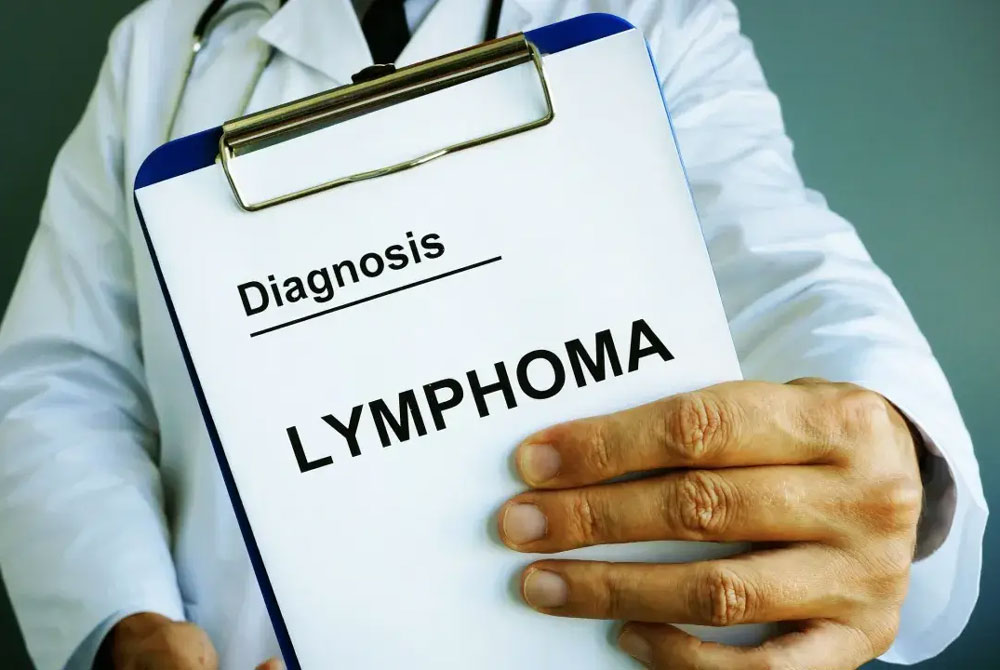Lymphoma is a group of malignant tumors of the lymphatic system that originate from lymph nodes or extranodal lymphoid tissues, commonly known as lymphoma. According to data, lymphoma is one of the most common blood tumors in the world and is divided into Hodgkin's lymphoma and non-Hodgkin's lymphoma according to pathology.

The clinical manifestations of malignant lymphoma are diverse, often lacking specificity, and are easily overlooked by people, resulting in misdiagnosis and missed diagnosis. How can we reduce misdiagnosis and missed diagnoses? Clinical practice has shown that the following "three musts" can help early detection of lymphoma.
One must
Lymphoma high-risk groups should be screened
Lymphoma high-risk groups mainly include the following groups:
- Immunodeficient patients (such as AIDS, and congenital immunodeficiency patients) or immunosuppressant users (such as patients after organ transplantation).
- People are exposed to radiation and harmful chemicals (such as hair dyes, herbicides, and benzene) for a long time.
- People who have received radiotherapy or chemotherapy in the past.
- People infected with certain viruses, including HCV (hepatitis C virus), HTLV-1 (human retrovirus), HPV (human papillomavirus), etc.
Second
Be familiar with the six early signs
Painless lymphadenopathy Lymphoma is common in the neck or groin, the size of a soybean or a date pit, medium hardness, and painless when pressed. As the disease progresses, lumps will appear in areas rich in lymph nodes. When diseases such as toothache and allergic rhinitis occur, the lymph nodes are painful, and they should be identified when seeking medical treatment.
Significant weight loss If the weight drops by about 10% for unknown reasons in a short period of time, you should be alert to the possibility that it is caused by lymphoma.
Patients with fever usually experience symptoms such as fever and night sweats in the early stages of the disease. The patient's fever is mainly low-grade, and a few patients may experience high fever or even profuse sweating.

Brain symptoms When lymphoma affects the brain, patients may experience symptoms such as inability to concentrate, mood changes, headaches, and even convulsions and epileptic seizures.
Skin itching Unexplained itching in a certain part of the body or the whole body, but the patient does not have allergies or urticaria, at this time, be alert to malignant lymphoma. Other unexplained symptoms These symptoms include fatigue, loss of appetite, etc., which are often ignored.
Other unexplained symptoms These symptoms include fatigue, loss of appetite, etc., which are often ignored.
Three things to do
Look
Check whether there are one or more swollen lymph nodes in the lymph node collection areas such as the neck, armpits or groin. Swollen lymph nodes are the most common early manifestation of lymphoma.
Tactile
Press the lymph nodes to see if there is pain. If there is pain, it may be inflammation; if there is no pain, pay great attention to it, because tumors are often painless. Clinically, many people have found swollen lymph nodes a few months ago or longer, but they ignored it because they did not hurt or itch.

Touch
Feel the softness and hardness of the lymph nodes. Different lymph nodes have different touches. Soft lymph nodes feel a bit like the hardness of lips; medium-hard lymph nodes feel similar to the tip of the nose; hard lymph nodes feel like the forehead. Soft lymph nodes are mainly caused by inflammation, while hard lymph nodes need further examination of mobility. Generally, lymph nodes caused by inflammation will move back and forth, left and right, while lymph nodes caused by tumors are often tightly attached to the surrounding tissues, with unclear boundaries and will not move.
Check
Lymph node enlargement caused by inflammation will subside after a period of time; malignant lymphoma will continue to grow and even merge into a mass. Therefore, we need to check the growth rate of lymph nodes.
If suspicious lymph nodes are found, be sure to go to the hospital for a puncture biopsy in time to confirm the diagnosis.

%20--%3e%3c!DOCTYPE%20svg%20PUBLIC%20'-//W3C//DTD%20SVG%201.1//EN'%20'http://www.w3.org/Graphics/SVG/1.1/DTD/svg11.dtd'%3e%3csvg%20version='1.1'%20id='图层_1'%20xmlns='http://www.w3.org/2000/svg'%20xmlns:xlink='http://www.w3.org/1999/xlink'%20x='0px'%20y='0px'%20width='256px'%20height='256px'%20viewBox='0%200%20256%20256'%20enable-background='new%200%200%20256%20256'%20xml:space='preserve'%3e%3cpath%20fill='%23FFFFFF'%20d='M194.597,24.009h35.292l-77.094,88.082l90.697,119.881h-71.021l-55.607-72.668L53.229,232.01H17.92%20l82.469-94.227L13.349,24.009h72.813l50.286,66.45l58.148-66.469V24.009z%20M182.217,210.889h19.566L75.538,44.014H54.583%20L182.217,210.889z'/%3e%3c/svg%3e)




